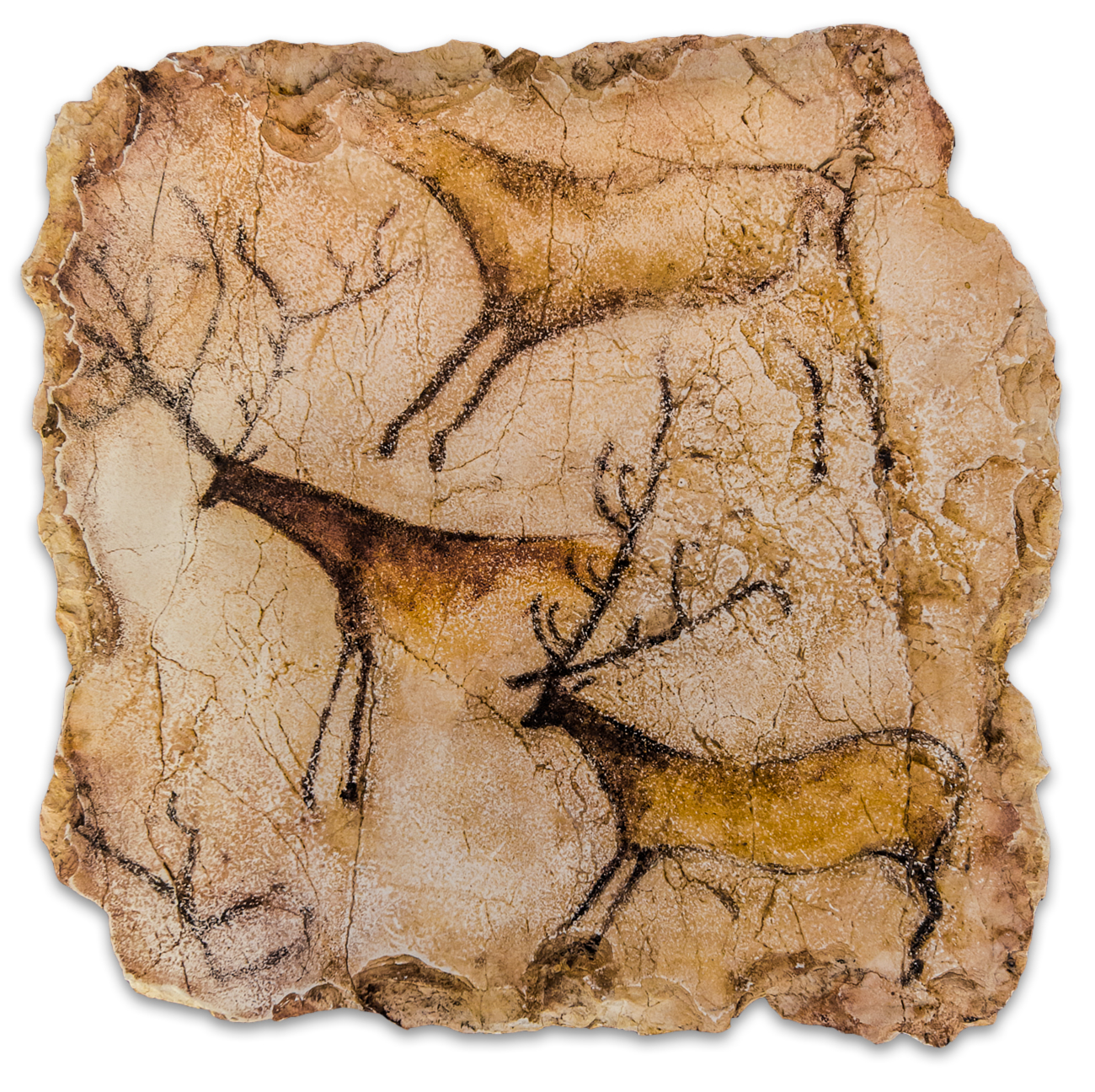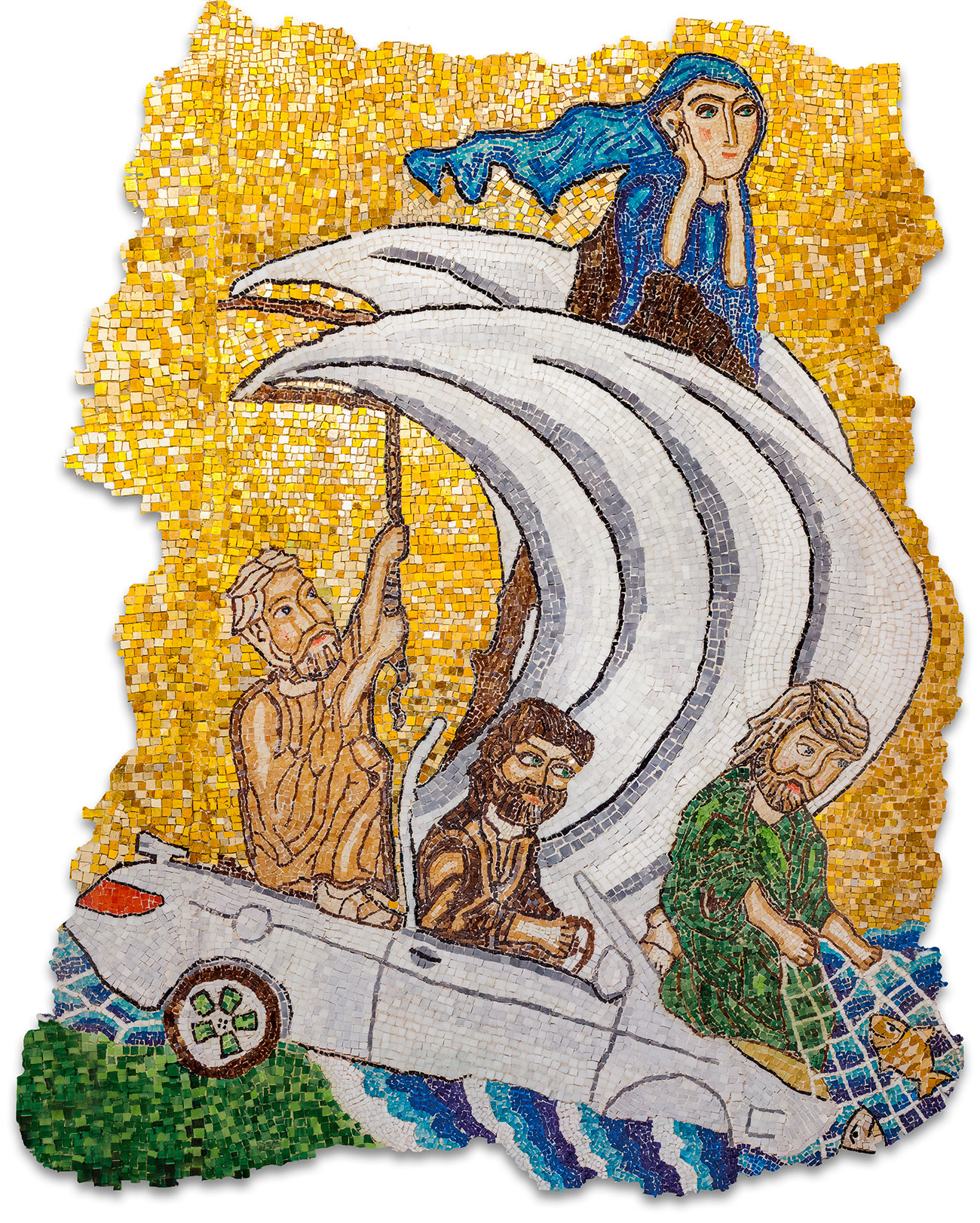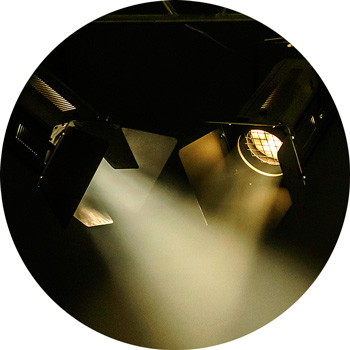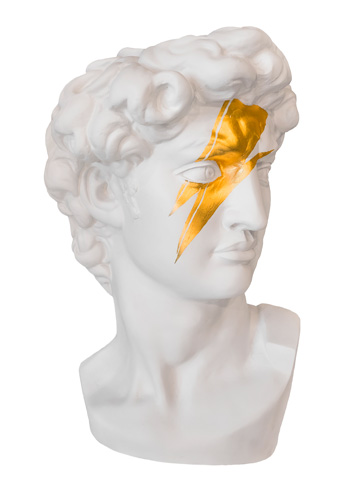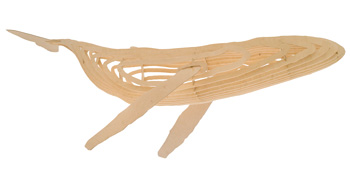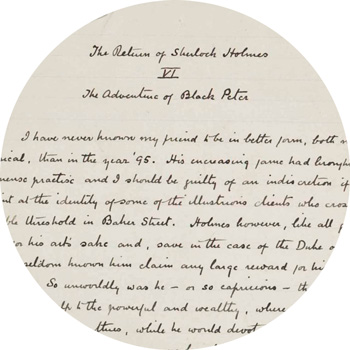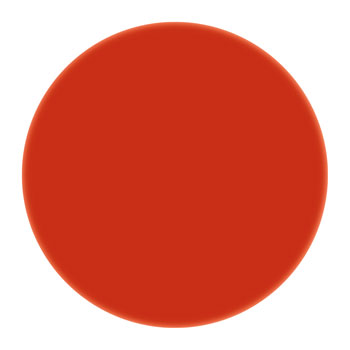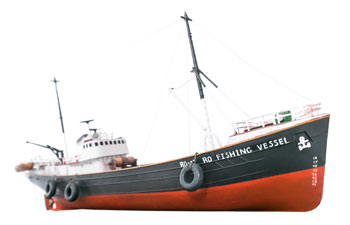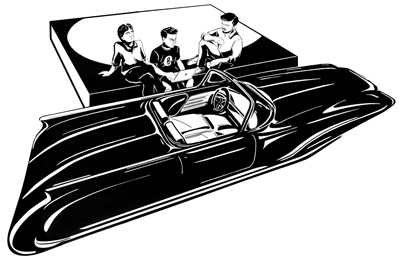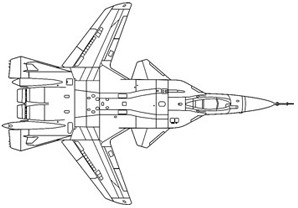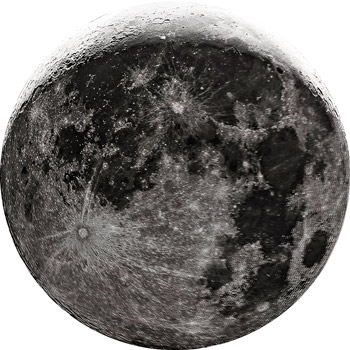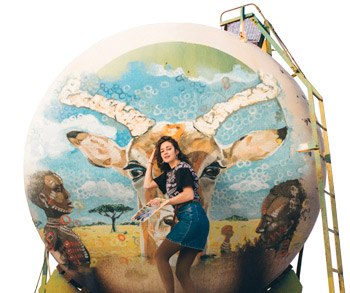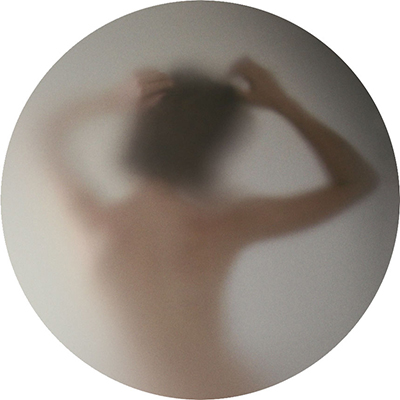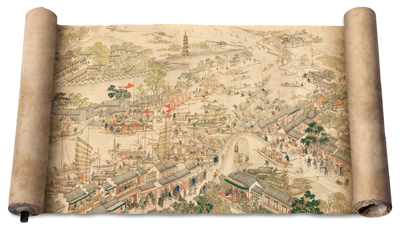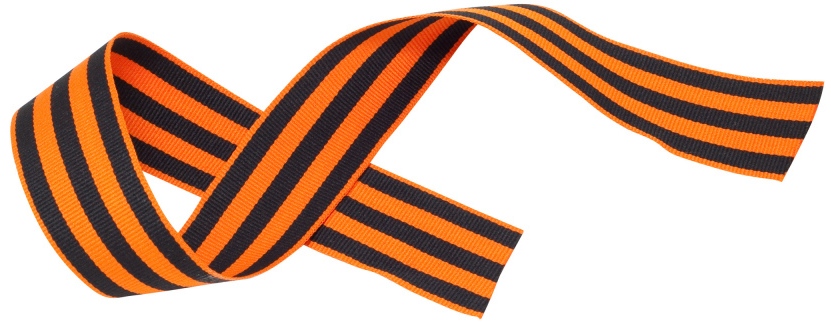The Stone studio is the most eclectic studio at Mama Ro. We simply took the paintings from the Lascaux and Altamira caves, from Sumerian cuneiform and the myth of the Nibiru planet, from the Mayan Pyramids, from the Karelian labyrinths, and from the petrified wood of the Mesozoic era and combined it with gadgets and magical lighting all into one studio. It’s amazing how it all got intertwined in the Stone studio. However, this eclecticism is all very relative – just as the nuclear mixture of cultures and civilizations resulted into something new not resembling the initial ideas and inspiration. As a result the Stone studio was formed.

Dedicated to the Blessed memory
of Kravchenko Alexander – our
Uncle Sasha! – who built studio
“Stone” and petroglyphs for it.
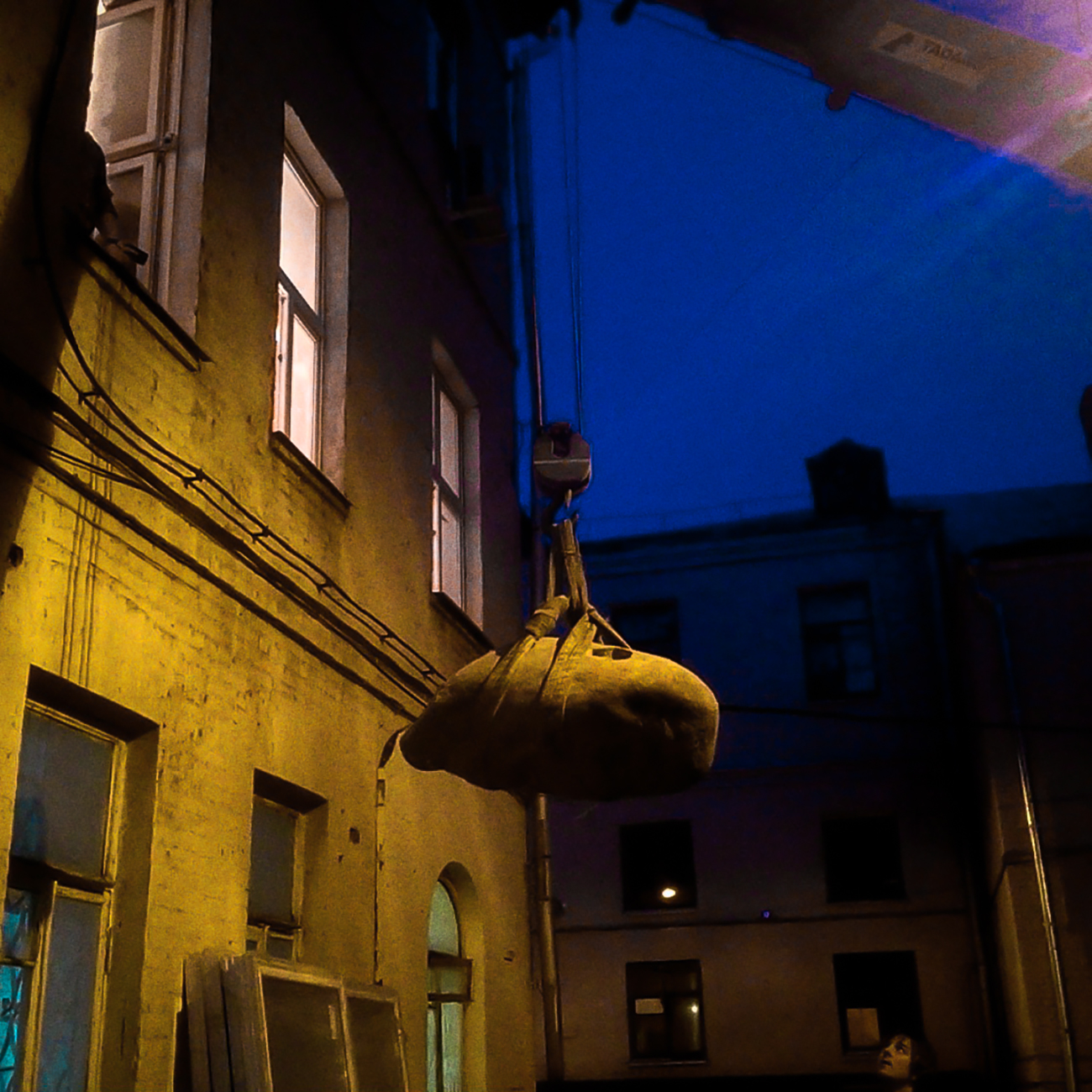
Megalithic Bed
It would be correct to start the story on the evening when we made a decision to lift a 250-kilo boulders to the second floor, it became clear: this would be the Stone studio.


We were inspired by megalithic structures – the mysterious composition of stones from the Neolithic period that were created by the ancient peoples of the North: from England (Stonehenge) up to Russia (Karelian labyrinths) – presumably for rituals, for calling UFOs or at least, for astronomy.

The purpose of our megalithic structure is quite mysterious as well: on the one hand, you can set your phone on charge at the bedside boulder and take a nap, on the other – each boulder looks exactly like it’s on one of the four cardinal directions, so the bed has the same length and width, so it’s up to you choose which side is a headboard. The purpose of this ritual is hidden deep within history, but a bit of fantasy helps revive it. Moreover, a large screen above the head is able to open a window to the universe when you are on the megalithic bed… We’ll get back to this later.
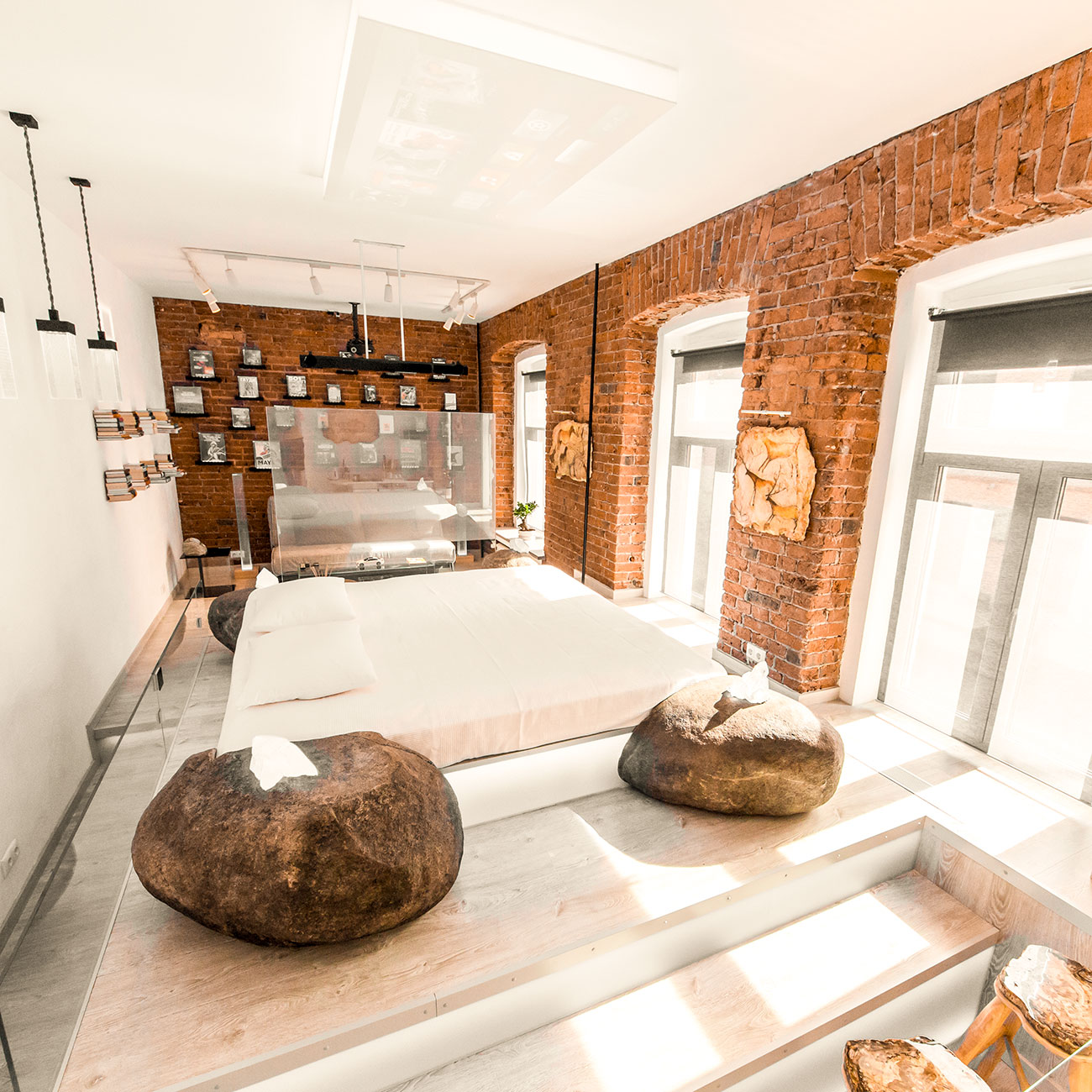
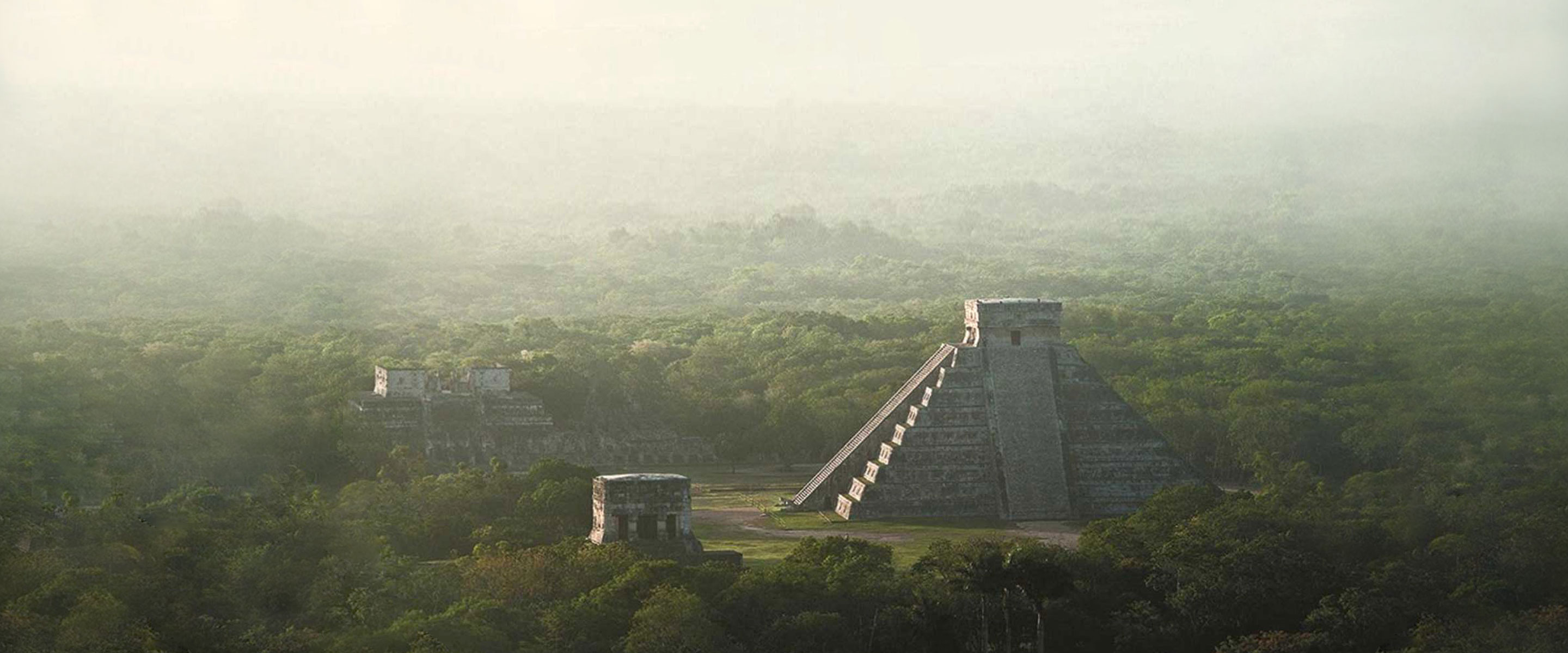
Mesoamerican Pyramid
Not all the ancient monuments are occult in nature. For example, there was a seed of truth in the Mayan pyramids: astronomy. Mesoamerican Indians used the flat tops of their pyramids to observe the stars.

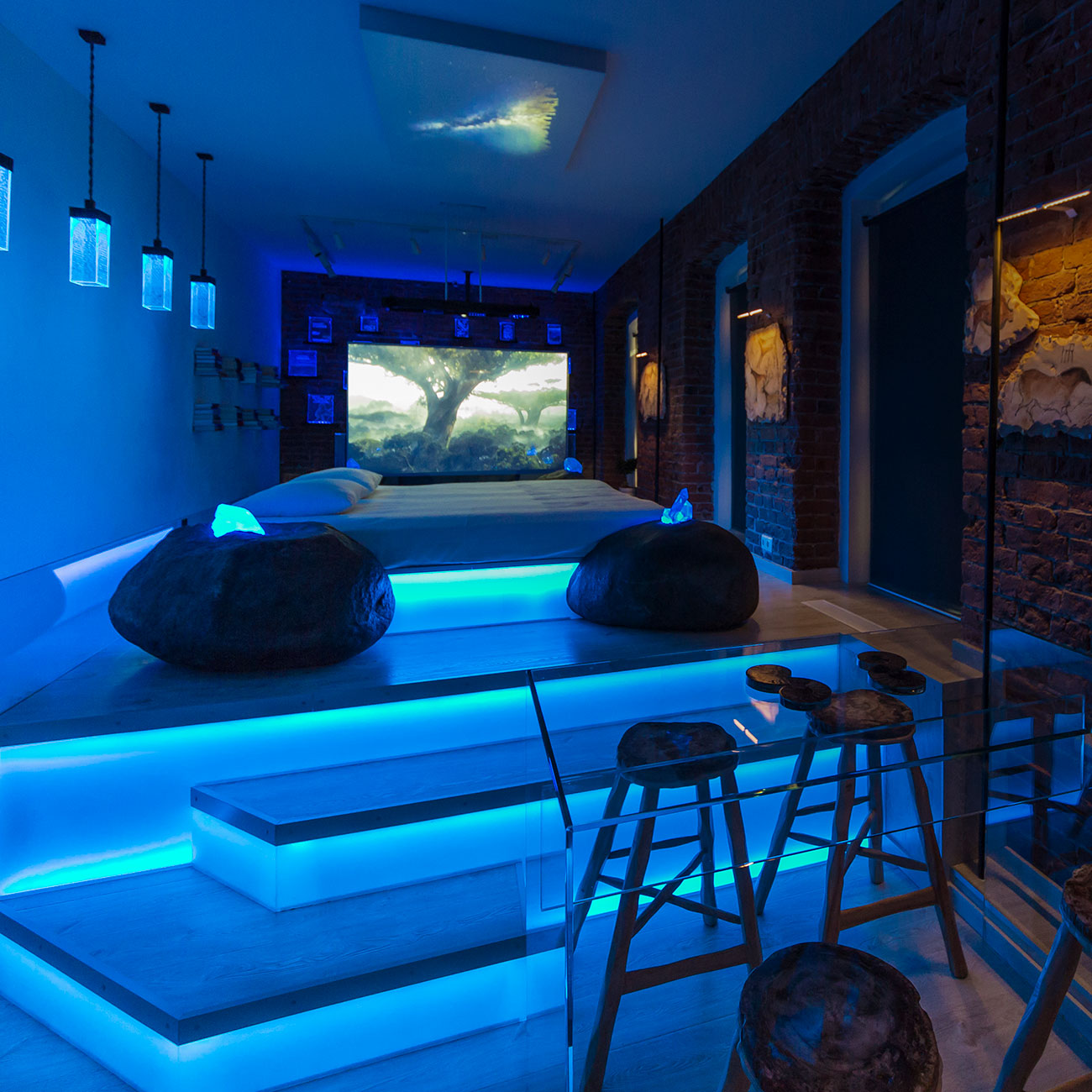
That is why under the megalithic bed the steps scamper in different directions – we have placed a pyramidal shape in the center of studio to lift up the 1-ton bed closer to the stars. The top of this pyramid is an observatory: make yourself comfortable, turn on a movie about the mysteries of the universe and get immersed in a dizzying journey through ancient space.

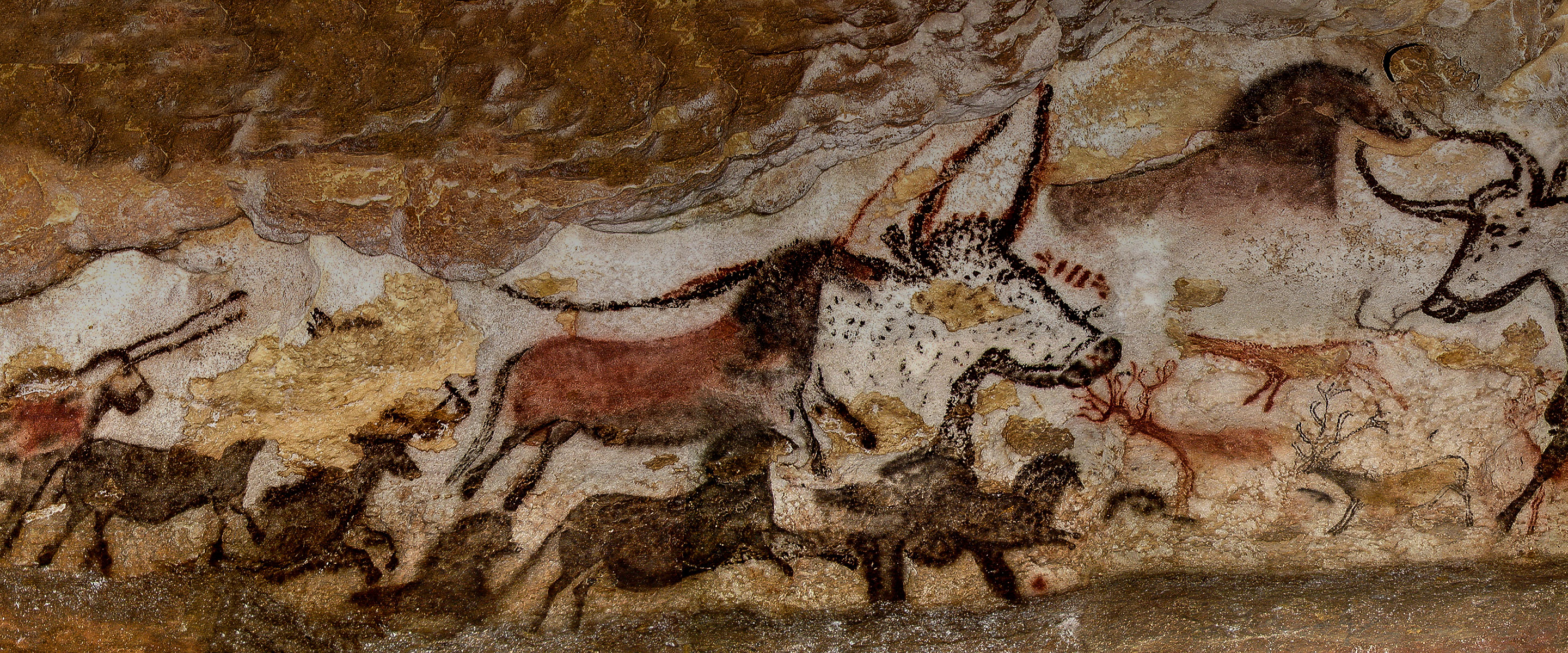
The Lascaux
and Altamira Studio
The Lascaux (France) and Altamira (Spain) caves are called the Paleolithic Louvre and Prado. Both were discovered by kids: Altamira was discovered by a 9-year-old girl in 1871, and Lascaux – in 1940 by boys who had lost their dog. The Petroglyph bison, horses and deers found in the cave turned out to be more than 30 thousand years old – older than the pyramids. Alas, the flow of tourists that flooded in the cradle of art, broke the fragile microclimate of caves that had been preserving the drawings for thousands of years. Thus, in order to save the caves, they got closed. But their exact replicas were created for tourists.

However, a copy never replaces an original. And we thought, since people will never see this beauty, it would be great to have at least a place not seeking to simply copy but to convey this sense of discovery. To do this, we took a marbled limestone – slab with beautiful veins and cracks – took off the polishing layer, broke into fragments of 5 to 50 kilos and painted them in the spirit of the Lascaux and Altamira drawings. Then we hung them on the walls of the studio.

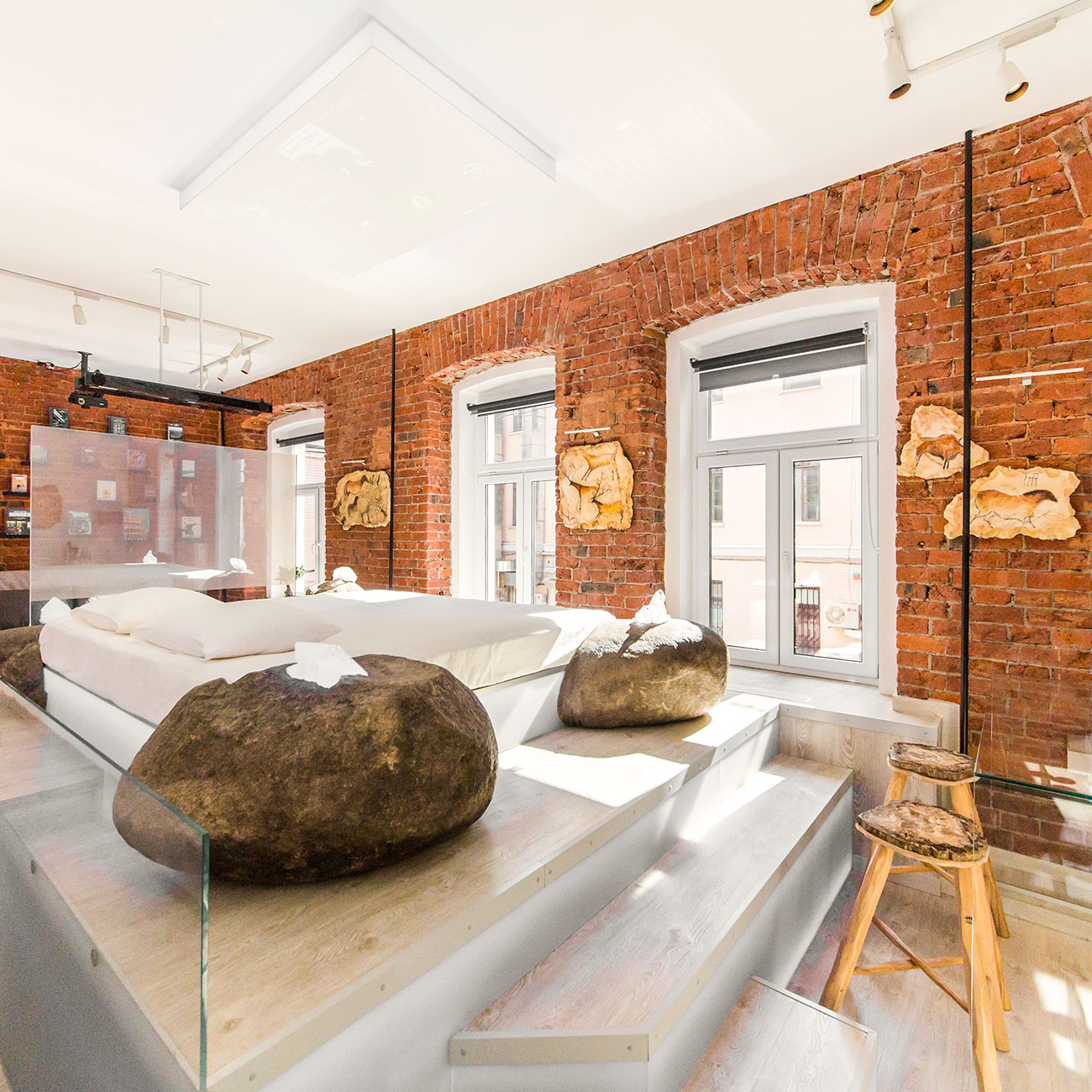
The result was not a cave but a studio where you can wake up, let in the sun and make breakfast – and all this surrounded by a unique painting on a real stone, which you can touch without being afraid of ruining it and feel something, as if the stone is actually speaking to you, just like a painting would.


The Ancient
Sumerians
and
the Myth of Nibiru
In the 20th century, some people believed that in the cosmology of the ancient Sumerians there existed a tenth planet called Nibiru. Every 3600 years, the planet would turn around the Sun at a very elongated orbit and pass precisely by the Earth. During one of these turns, when the Sumerian civilization was flourishing between the rivers Tigris and Euphrates, it is said that some advanced beings descended from the planet Nibiru and gave the ancient Sumerians their knowledge and technology.

During one of these turns, when the Sumerian civilization was flourishing between the rivers Tigris and Euphrates, it is said that some advanced beings descended from the planet Nibiru and gave the ancient Sumerians their knowledge and technology.
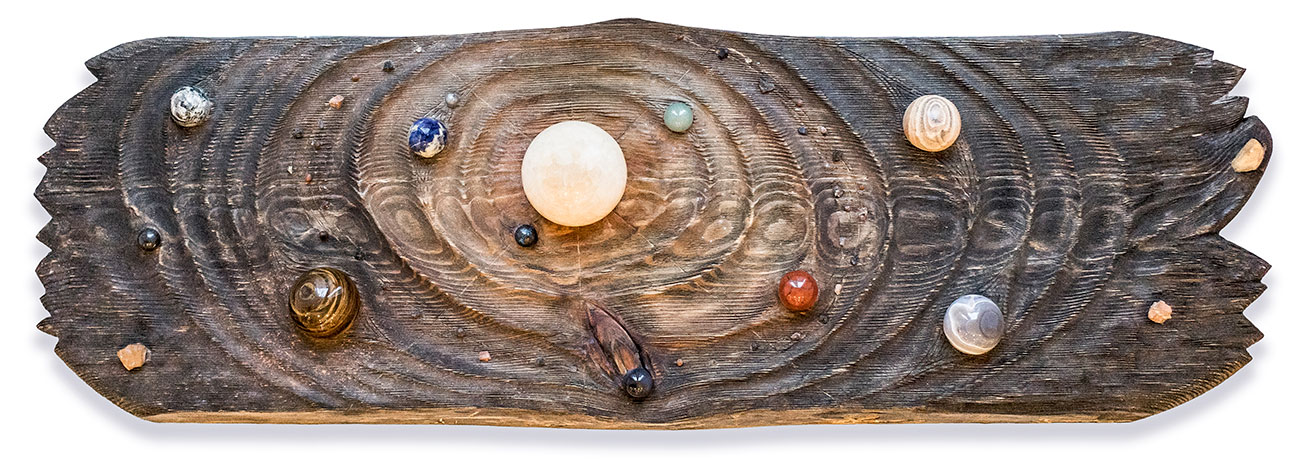
We really liked this myth and decided to adapt it into the studio: we improvised and added installations of rounded stones and an old board where the planet Nibiru cross the orbits of other planets and move towards the Earth: this is a kind of road map, explaining the origins of high-technology in a studio of stones:
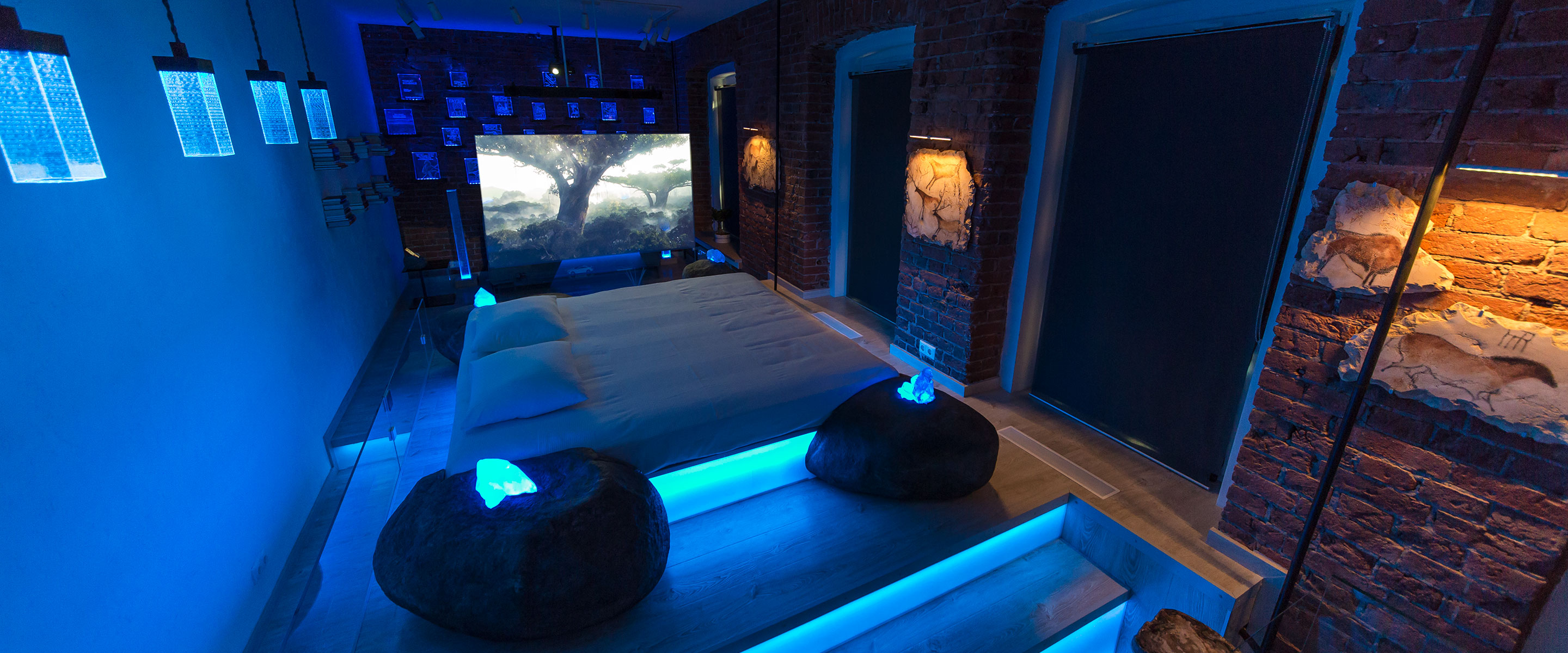
…a double-sided projection screen made of smart glass, twinkling in the darkness bedside rock crystals and unique lamps covered with glowing ancient Sumerian cuneiform.

The last are particularly interesting. With great enthusiasm we studied the clay tablets which were covered in Sumerian cuneiform and began to think if the writing also came to the Sumerians from Nibiru, then what did the original writing look like that inspired them to create messages with wedges?
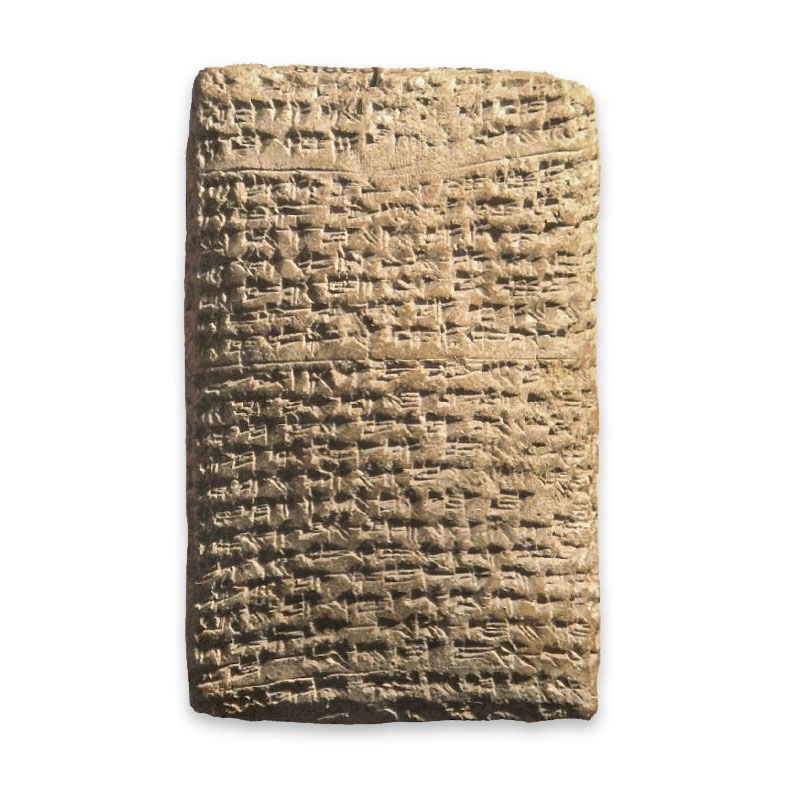
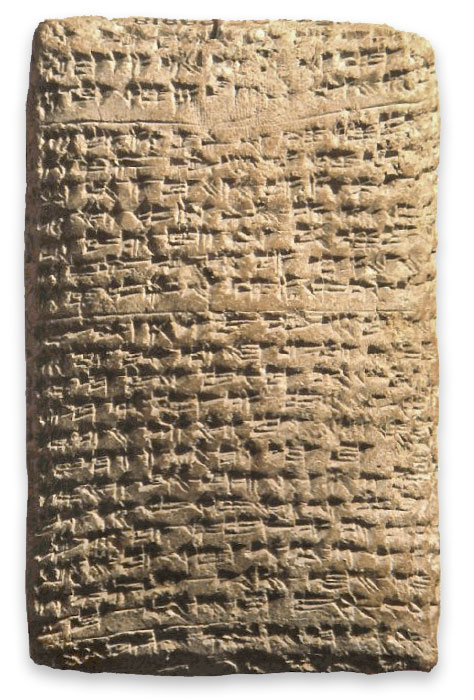
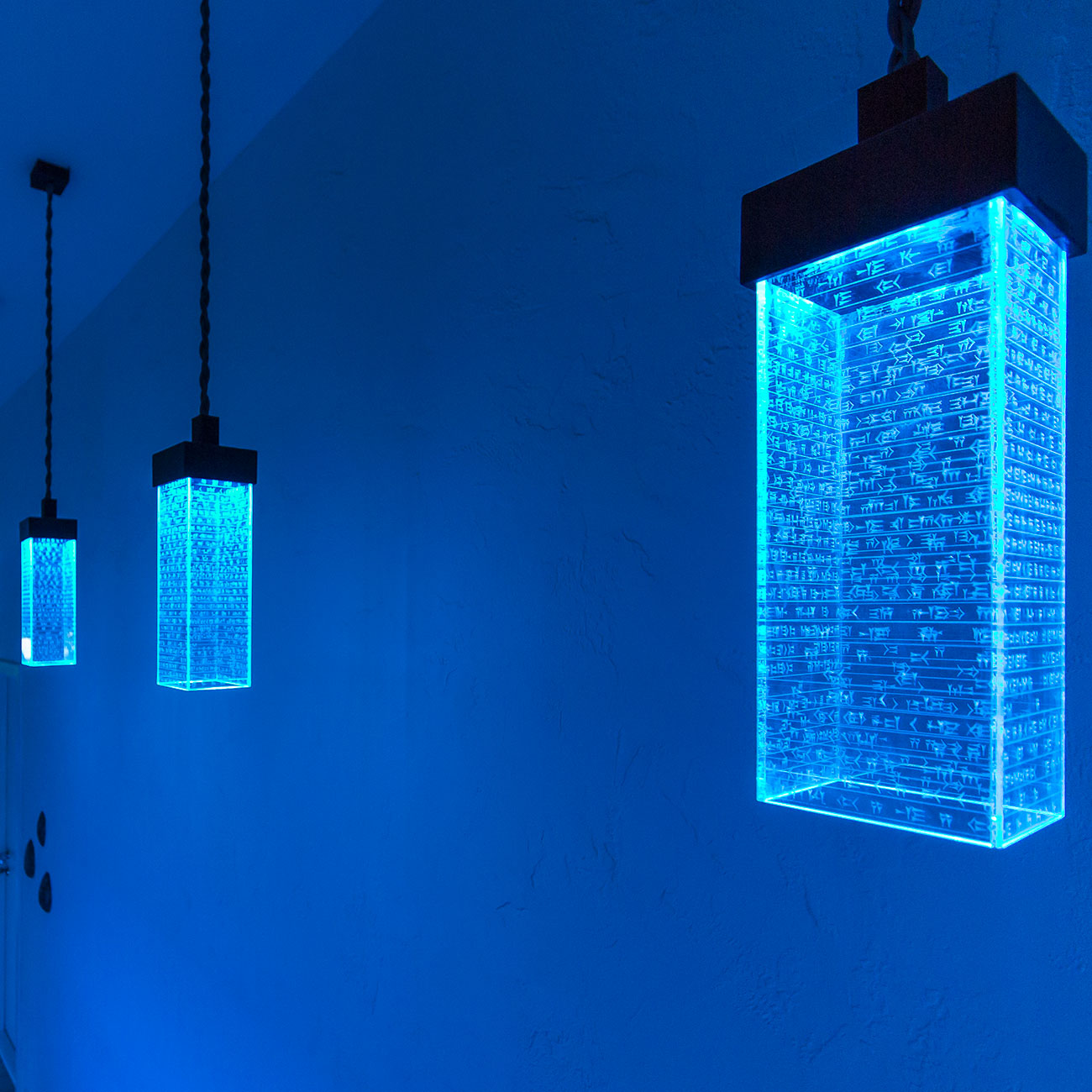
Thus, we came up with these magical lamps – perhaps this is exactly how the ships in Sumerian Mesopotamia from Nibiru shone from inside when they arrived. Having examined the principles of translation which allowed scientists at the time to decipher Sumerian writing, we ciphered as a message in the lamps the poems of Joseph Brodsky that is now associated with the studio: “Under a spreading elm” and “San Pietro”.

Prehistoric Utensils
Some items in the kitchen are also made of stone, but do not belong to history because of their antiquity – so many millions of years have passed that the amount of zeros in the numbers seem pointless. And yet, if you imagine that at that time there were trees and life was in full swing, you can feel the joy of the archaeologist who landed on one of the bar stools in the kitchen – because the seat is made of a slice of petrified wood aged anywhere between 40 000 000 to 120 000 000 years (we have also provided transparent plastic stool-bottom in case this age seems too icy).
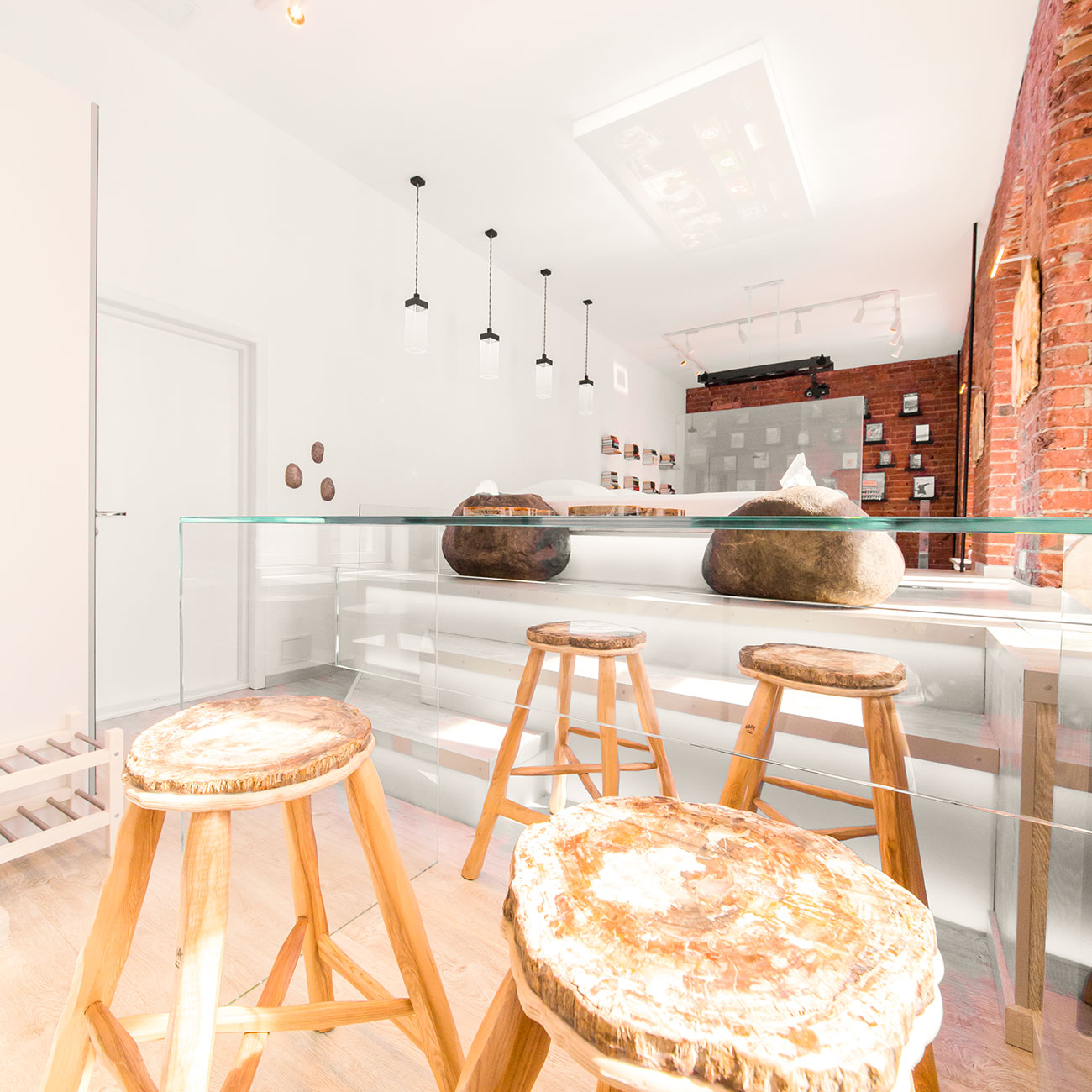
Same with cupholders. We remembered the ancient tools as shells, bones and stones used for household needs and began to improvise: we took a resin, prepared shapes and adapted ancient ammonites to the needs of bars by casting cupholders from them. The age of each is the same – 120 million years. It’s fair to say that the design of these utensils is wholly owned by the Mesozoic era. Mama Ro is only the assembler.
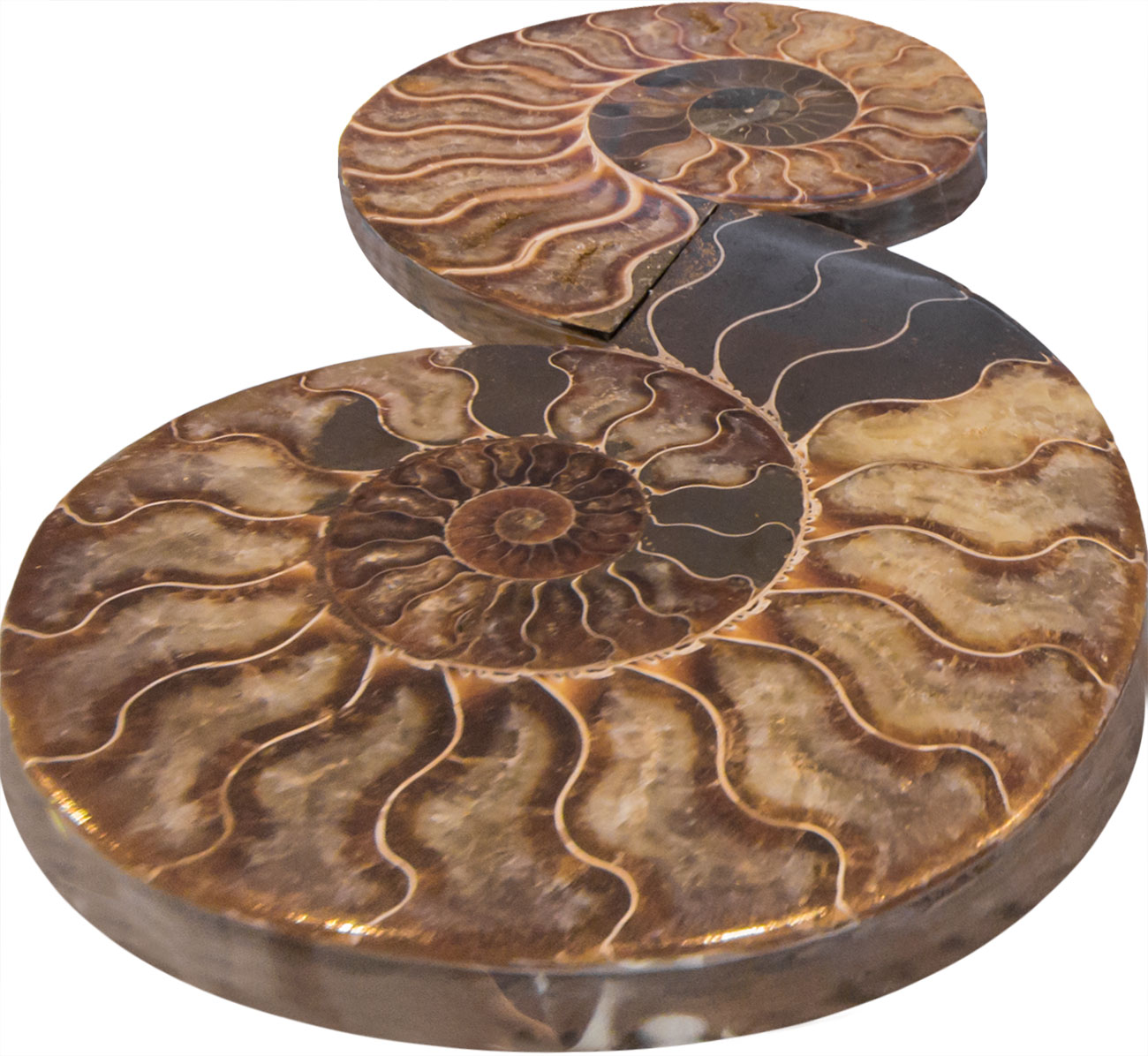

Fragments
of Civilization
There are also some utensils in the studio that help imagine what our world might look like in 120 million years. If history is cyclical, it is quite possible that mankind will live a new stone age where gadgets chargers are carved no other than from the cobble.

Cars are also in the blocks of resin, resembling how people have forgotten what they were once needed for…
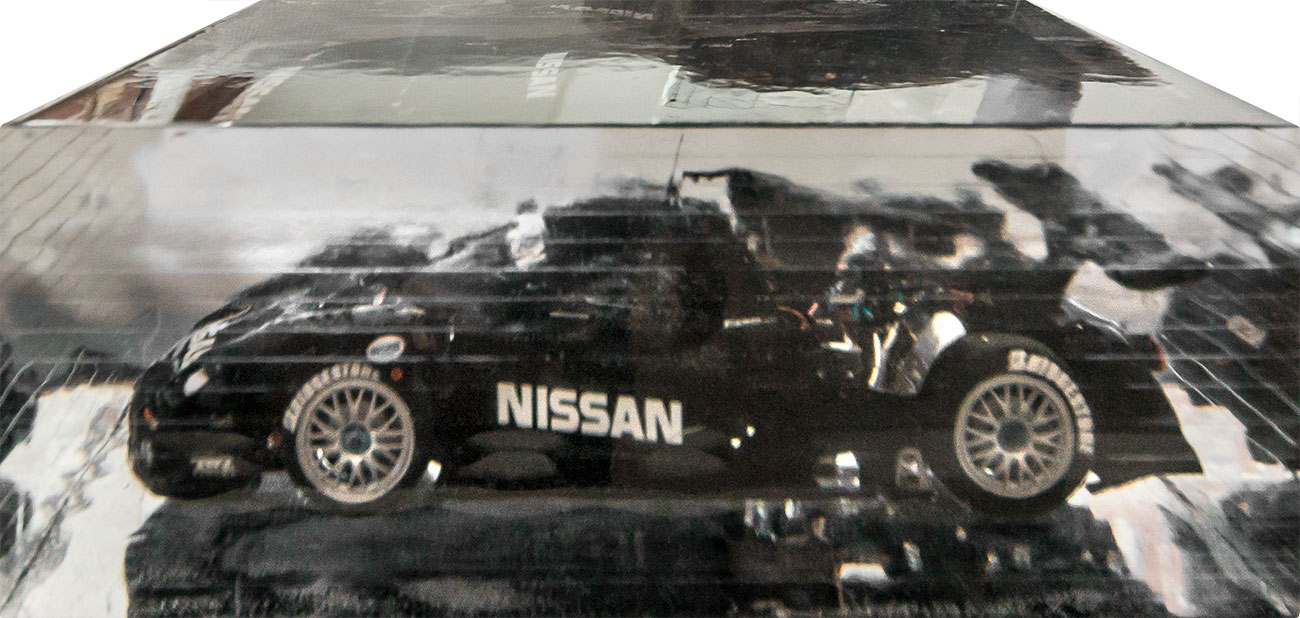
…they adjust the broken-down hard disks to create watches that work on the principle of the ancient phenakistoscopes – LEDs rotating on the disk and flashing at a certain rate, creating a frozen image of time in the air.
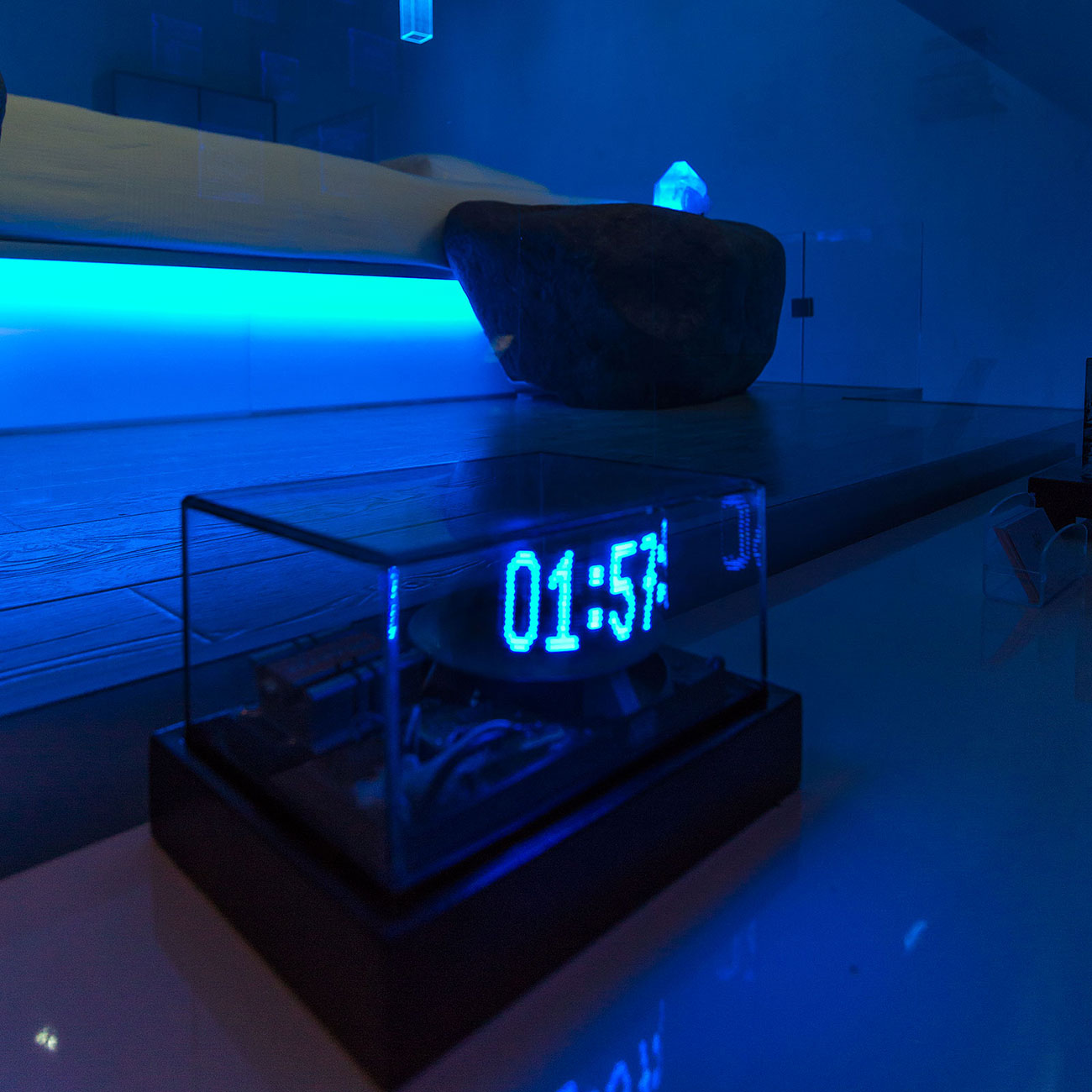
All these accessories in the studio are a tribute to the fictional universes where the world experienced a global cataclysm or nuclear strikes and rolled back into the stone age, and those who survived had to readjust the fragments of civilization to survive again.
Altar of Civilizations
Having assigned the primary importance to our studio feeling like a home – it’s impossible to do otherwise in a project which is directly correlated with a space – we have assembled, as an altar in the studio, a light installation of the books that tell – from in-depth to general – us about civilizations and human’s place in them.
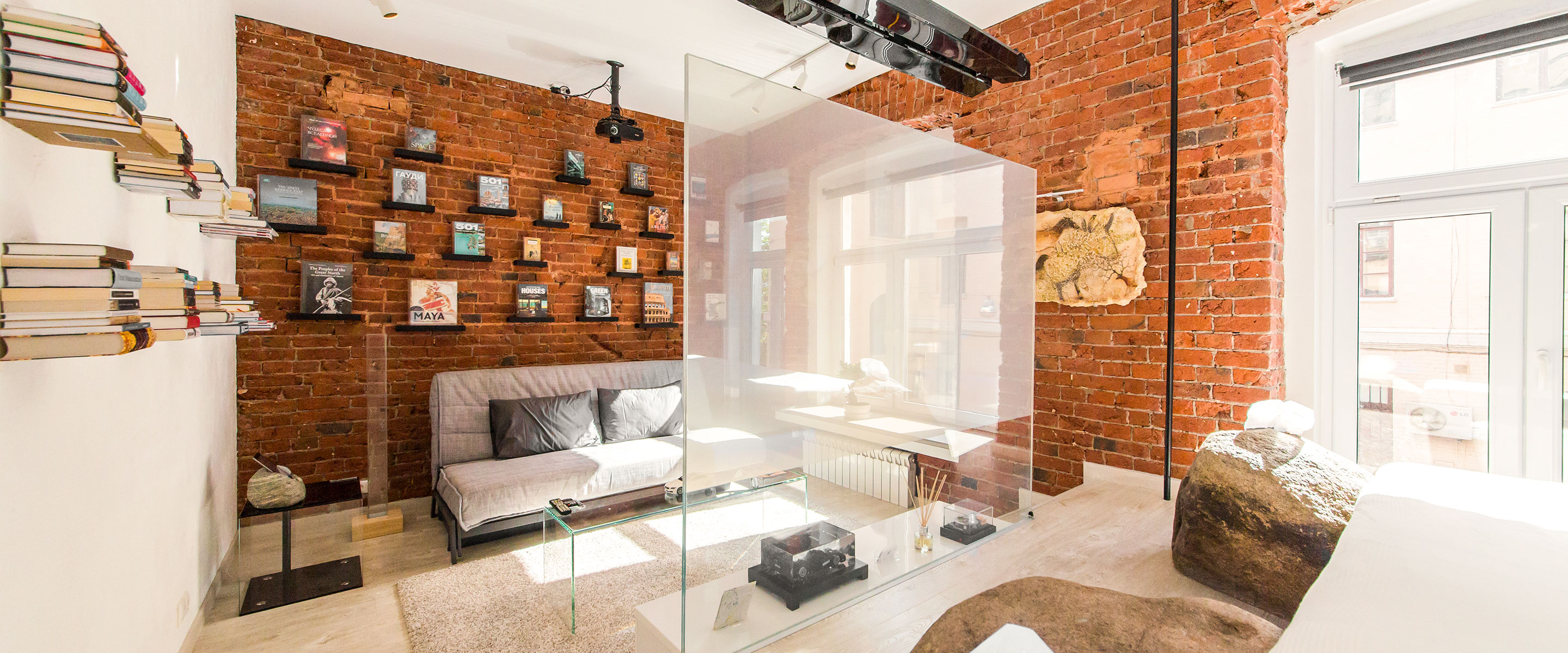
There are several rows of books, just like in a Christian altar. Books on housing and books on architecture to books which describe the dwellings of small nationalities occupy the first and most important row. The second row is for monuments of cultures and civilizations: from the Thoughts of Marcus Aurelius to Lao Tzu and from buildings of the Ancient Sumerians to Mayan tribes – a product of civilization. Finally, in the third row there are albums and books on astronomy and the nature of phenomena such as the knowledge of the universe as a higher point of civilization. At night, this associative selection takes part in lighting the studio, inviting guests to take any of the books and become a part of the knowledge.
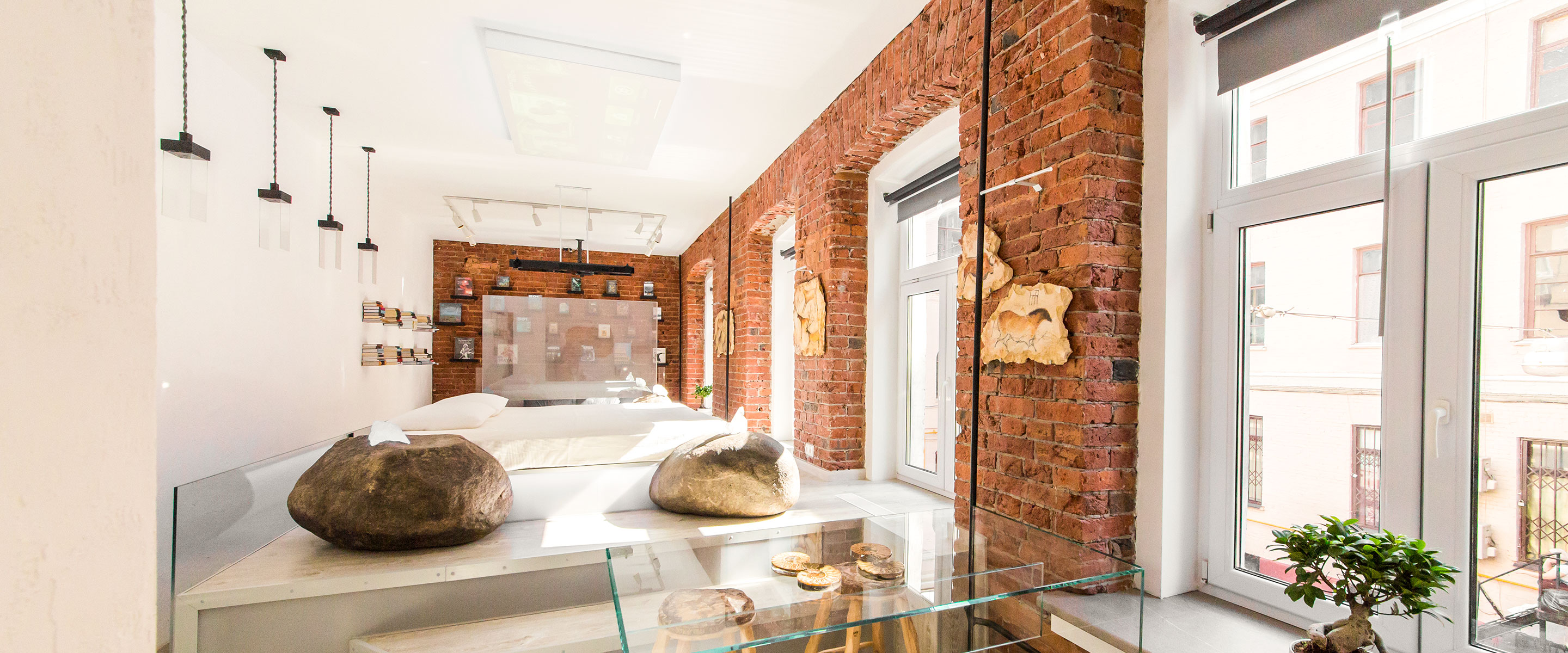
Epilogue of Stone
It can be concluded that the Stone Studio is a kind of game with meanings, where the main meaning constantly changes skin or even states its absence. But this is not the case. One of the names for the studio was “Civilization”, but we chose “Stone” just because this studio is above all about stone. From this point of view, the stone is an inspiring primordial object. Ancient civilization only used it to build themselves by interpreting and modifying it in different ways. And there comes the realization that the studio furniture and decor made of real stone are not only the visual components of the interior, but above all its semantic substance. There are people who believe that ordinary stone boulders and cobbles are the slowest growing forms of life. After working on the studio, we realized that this is true. But to feel it, you need to visit the Stone studio.
Share:
Read about this
studio sibling on
the Tree of Legends:
